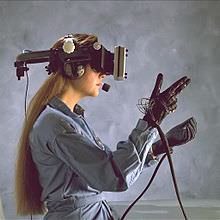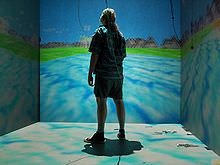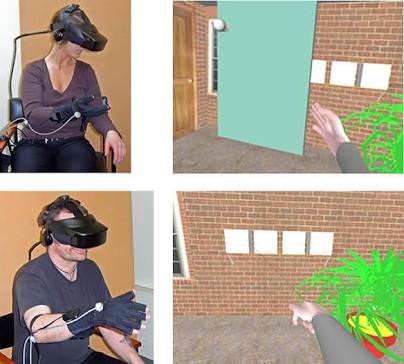The Technology Of Immersive Virtual Reality (IVR)
We may have heard of Virtual Reality, but the emergence of tech evolution has further advanced this into the world of "Immersive Virtual Technology (IVR)".

Introduction
Immersive Virtual Reality (IVR) is the perception or simulation of being physically present in a non-existent and non-physical world. The simulation is created by literally submerging the user of the IVR in a stimuli that provides and perceives an engrossed totality of the "mimicked" environment.
Types of IVR
According to one of the patriarchs of IVR; Ernest W. Adams, IVR can be categorized into three:
- Tactile Immersion: In this type of IVR, skills are involved. Your experiences in the real world are required. For example; driving a car in a virtual world.
- Strategic Immersion: In this type of IVR, skill is not required. It is more of cerebral than physical. The IVR interacts directly with your mental ability. For example; choosing the next move in a chess competition from a possibility of multiple steps.
- Narrative Immersion: This type of IVR only simulates the reality gotten when experiencing a particular moment. Of the three types, this is the most short-lived.

One of the backbones of the IVR technology is the Oculus Rift. They have caused a major revolution in this field. According to Oculus, there are some technologies (minimum requirements) that should be put in place for effective immersion of Virtual Reality to take place. Here is a list of them:
- Optical Calibration Technology
- Tracking-eye Movement Technology
- Motion Detector
- Optical Technology (HoloLens, Virtual Lens, etc)
- Wide view (Over 120 degrees)
- HD Resolution LED
- Low Latency Indentifier
Interaction of IVR with the nervous system
The edge that IVR has given to the regular VR is the interaction that occurs at the Central Nervous System (CNS) of the user. Sensation are induced, causing the user to strongly believe the non-existent world is actually the physical world he is living in. Thus, manipulating the CNS. Advanced are being made to incorporate nanorobots directly into the brain of the user, which will send and receive signals between the user and IVR.

Advances in IVR
Advances are underway to create a "Full Immersive Virtual Reality". This will incorporate the whole five senses of the user (touch, sound, sight, smell, and taste). In a layman's term these will ultimately fool the user's senses through:
- Digital nose and smell replication (sense of smell and olfactory)
- Digital taste replication (sense of taste and gustation)
- Haptis feedback (sense of touch and tactile)
- Digital panoramic 3-D display (sense of sight and visual)
- Digital surround acoustics (sense of sound and auditory)
Applications of IVR
There are many current applications and potential applications of this amazing technology. These include:
- For rehearsing and training of people for tasks
- In VR gaming
- In Medicals (even for the treating of Schizoprenia)
Side effects of IVR
There is no doubt to the fact that every emerging tech is posed with challenges that should be taken care of. And the major challenge here is "Motion sickness". The sickness is more prevalent in users with prolonged hours of usage. That is why a 30minute interval is advocated for every 3 hours of usage. With this, the effect is greatly minimized.
Technology has really come to stay.
Tech Rules!!
References for further reading: Ref1, Ref2, Ref3, Ref4


super technology...
excellent post friend I liked a lot, greetings I follow you I hope you can visit my profile.